[ad_1]
Southern Europe is known for having a Mediterranean climate that produces hot summers, mild winters, and lots of sunny days.
But there is a definite chill in the air whenever any of the below spooky stories are told…
Related: Top 10 Ghost Towns Inside Or Near Famous Cities
10 Quinta da Pauliceia, Águeda, Portugal
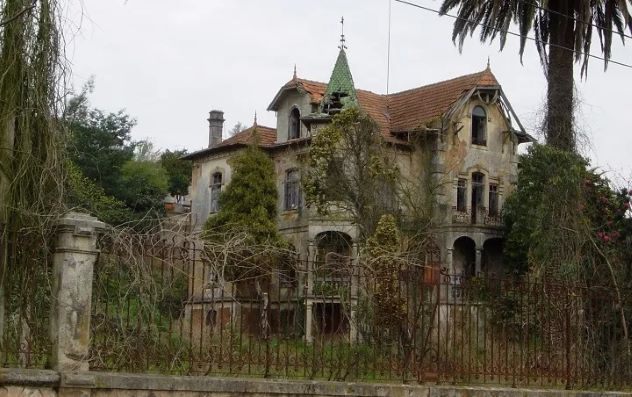
Águeda is home to the Umbrella Sky Project, a project that forms part of the annual AgitÁgueda Art Festival. A kaleidoscope of around 3,000 colorful umbrellas is suspended over the streets in the center of the town, adding to the festive atmosphere.
In contrast, Águeda is also where you’ll find one of the most haunted houses in Portugal. Quinta da Pauliceia stands on an abandoned plot of land and has that typical haunted house look about it. Long ago, it was inhabited by the Águedense family, who moved to Portugal from Brazil. In 1918, all but one member of the family died during the influenza pandemic. The surviving family member stayed until they, too, eventually died, leaving no heir behind.
Neighbors on either side of the house have heard the neighing of horses coming from the crumbling stables on the property in the dark of night, and some have even reported hearing shotgun blasts breaking the silence. And the few who dared venture close to the house to investigate have reportedly had their hair pulled by an invisible hand.[1]
9 Đavolja Varoš, Kuršumlija, Serbia
Đavolja Varoš, Serbian for “the devil’s town,” is a strange-looking rock formation that stands near Kuršumlija in southeastern Serbia. While it is commonly accepted that the rocks’ peculiar shape was created by soil erosion, a persistent local legend has it that the rocks are the remains of people attending a wedding reception. The revelers were petrified by the devil, who appeared to them as they drank water from a nearby spring. For the sake of twisted fun, the devil infiltrated their minds and tried to force a marriage between a brother and sister. A local fairy overheard the commotion, and realizing what the devil was trying to do, she whipped out some magic tricks and turned everyone into stone.
Some locals insist that the area remains haunted, and you won’t catch them spending the night there.[2]
8 Skrinjari House, Croatia
In the small village of Skrinjari, Croatia, stands a nondescript house surrounded by trees. It’s only when the history of the house is revealed that the picture takes on an eerie hue. It is said that the house was built in the 1980s, and the original owner and his family fled the property because of paranormal activity. No one will buy the place even though it’s been for sale since 1997 for a very low price. Rumors are still making the rounds that the current owner is willing to give the house to the first person who can spend an entire night inside of it and live to tell the tale.
As most haunted house stories go, it is believed that the Skrinjari house was constructed over a graveyard, and all sorts of mishaps then began to befall its occupants. According to legend, a little girl fell into a well on the grounds and drowned. Her body was never retrieved. A young woman was murdered in the house, and her remains were hidden in the foundation.
Those who have tried to “win” the house by staying the night have allegedly ended up in a mental hospital after encountering the ghosts of the little girl and young woman. Some people have also reported hearing a baby’s cry coming from the house and seeing strange shadows flitting past the uncovered windows. Sometimes an electric bulb can be seen glowing and swinging inside the attic even though the house is not connected to a power supply.[3]
7 Piazza Navona, Rome, Italy
Olimpia Maidalchini was born into a poor family in 1591, a fact which later ignited a fire in her to climb up the social ranks. Her parents wished for her to become a nun to avoid the expense of a wedding, but Olimpia flat-out refused. She went on to marry twice, both times marrying into money. Her second husband, Pamphilio Pamphili, came from one of the wealthiest families in Italy. Thus Olimpia lived her best life in the various palaces owned by the Pamphili family, including the Palazzo Pamphili in Piazza Navona.
After Pamphilio died, Olimpia became the right-hand woman of his brother, who would eventually be Pope Innocent X. Those who wished to visit the pope had to bring Olimpia expensive gifts to be granted the privilege. Soon, there were rumblings that she and the pope were in a sinful relationship. Olimpia solved this problem by poisoning the gossipers.
It is alleged that when Pope Innocent X was on his deathbed in 1684, Olimpia locked him inside his bedroom while she stole the papal treasure, including two chests of gold. She wasn’t about to use any of the gold to pay for the pope’s funeral, so she fled Rome when the night was at its darkest.
Olimpia never returned and died of the plague a couple of years later. Her ghost returned, however, and rumors started flying that Olimpia, dressed in black and holding on tight to her stolen gold, could sometimes be seen fleeing Piazza Navona and hurtling across the Ponte Sisto. Other times she is seen in a black carriage drawn by black horses, as her shrill laughter echoes in the night.[4]
6 Accursed Mountains, Albania
In Albania, you’ll see mosques and churches standing side by side in a country known worldwide for its religious tolerance. The Albanian people are also known for going out of their way to make visitors and tourists feel welcome.
One of the most famous landmarks in Albania is the mountain range known as the Accursed Mountains or the Albanian Alps. Tourists and hikers are drawn to these mountains because of their remote location and tranquil atmosphere. Two villages in the mountains, Valbona and Theth, are connected by a lone trail that snakes over the mountains, and you can only get from one to the other by hiking over the Valbona Pass, which takes around eight hours.
The Accursed Mountain range got its name because of the legend of three brothers who went hunting up in the mountains and there met a fairy. All three instantly fell in love with the fairy and began fighting about who saw her first. The fight turned ugly, and all three brothers died. The fairy watched but couldn’t help. So when the brothers died, she ran and hid behind the peaks of the mountain.
Days passed, and the mother of the young men began searching for her sons after becoming worried that they hadn’t returned yet. She found their lifeless bodies and began wailing as she buried them, her cries echoing down the mountain. The fairy emerged from her hiding place when she heard the mother’s cries and tried to explain. The mother refused to listen to the fairy and blamed her and the mountain range for her children’s deaths. Ever since, the mountains have been referred to as the Accursed Mountains.
Many locals still hold fast to the curse and are convinced the mountains are haunted.[5]
5 Cismigiu Hotel, Bucharest, Romania
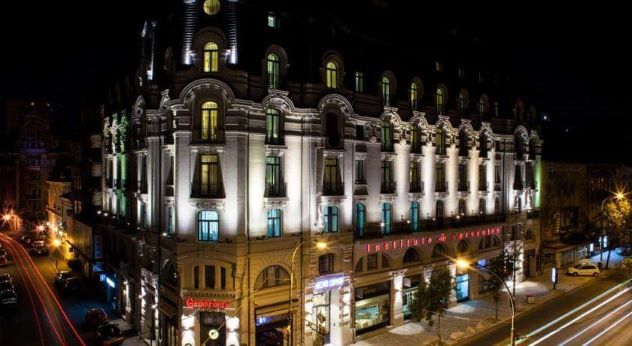
Romania will forever be first associated with the so-called Dracula’s Castle, more formally known as Bran Castle.
However, legend has it that several restless spirits also wander this country, the most famous of which is that of a student who still roams the Cismigiu Hotel in Bucharest. The hotel was built just after the start of the 20th century, but by 1970 it had been abandoned and left to rot. Finally, 20 years later, the property was acquired by the Theatre Academy and converted into student housing.
One particular weekend, shortly before a school vacation was to start, all the students had already departed for home, except for a lone girl. She walked down the hall and entered what she thought was a dorm room. It was nearly midnight and very dark, and what the girl actually stepped into was an elevator shaft. She fell down the shaft and was seriously injured. Panicking and in pain, she shouted for help, but there was no one to hear her. She died a short time later.
Ever since the accidental death, reports have been making the rounds about screams echoing through the halls of the building and from what used to be the elevator shaft. The building has since been renovated and converted back into a hotel. The shaft no longer exists, but that hasn’t stopped people from reporting ghostly goings-on in this former student housing building.[6]
4 The House of the Seven Chimneys, Madrid, Spain
In the 16th century, Chueca in Madrid, Spain, was a quiet and tranquil place. And it was also the location of a major scandal. Elena, the beautiful daughter of Philip II’s huntsman, caught the eye of the king (who was still a prince at the time). To avoid rumors, Elena was married off to another, Captain Zapata. Unfortunately, Zapata died during a battle in Flanders soon after the wedding, which devastated a pregnant Elena. Shortly after giving birth to a baby girl, Elena also died.
It was believed that Elena had died from a broken heart, but soon another story started making the rounds. Servants murmured behind their hands about knife wounds on Elena’s body, which gave rise to the theory that her child may have been the king’s and not Zapata’s. No investigation could be done on Elena’s remains as her corpse mysteriously vanished, and not too long after, her father was also found dead.
A hideaway/love nest known as the House of the Seven Chimneys was initially constructed for Philip II and Elena, but it was only her ghost that would eventually roam there. Citizens passing by the house reported seeing a woman dressed in white flitting between and around the chimneys, stopping only to point a finger at the Alcazar where Philip II lived at the time.
At the end of the nineteenth century the building was renovated, and the bones of a woman were discovered inside the walls of the basement along with 16th-century coins.[7]
3 The Well of Souls, Kifissia, Athens, Greece
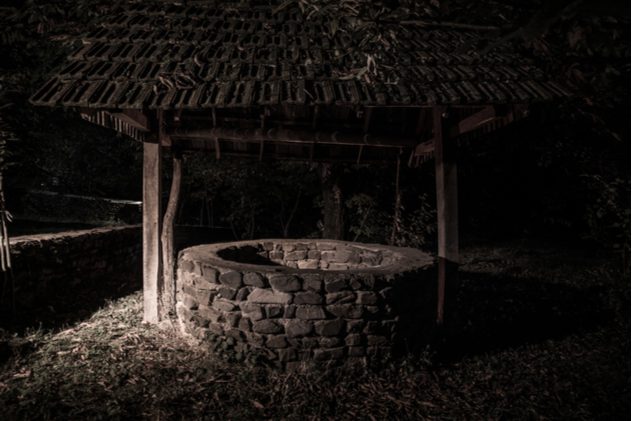
Greece is the stuff of vacation dreams. Here you will find friendly people, stunning beaches, gourmet food, fantastic wine, and excellent coffee.
But much the same as all the other places on this list, Greece has a spooky side too. In the northern suburb of Kifissia in Athens is a well that has been sealed with a cement block and has reeds growing around it, making it difficult to find. The outer part of the well has symbols scribbled over it and is believed by locals to be haunted by the souls of the dead who cannot pass on to the next life. These apparitions appear to those who pass by the well at night and often take on terrifying forms.
It is rumored that a man once tried to shoot one of these ghosts. The following day he became ill and died.[8]
2 Parco Sempione, Milan, Italy
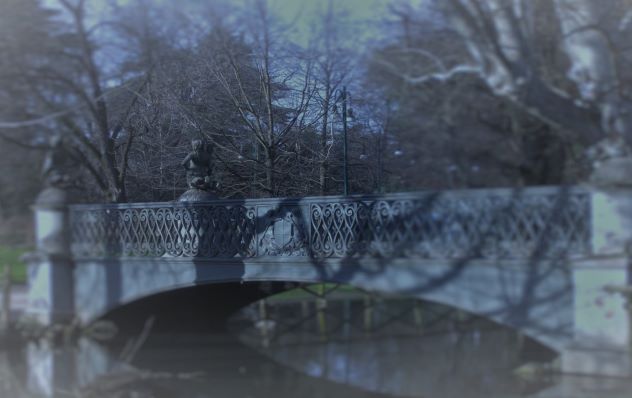
Near the Castello Sforzesco lies the Parco Sempione, the largest park in Milan. The park dates back to the 15th century and is a popular hangout spot for locals. Inside the park are several buildings and sculptures that highlight the history of the area.
But it is not only the living that enjoys the park. Legend has it that the Veiled Lady walks here on hot summer nights, her face covered with a black veil. She keeps to herself most of the time, but when the scent of violets permeates the air, it is said that the Veiled Lady wishes to reveal her true form.
Whenever a man catches the scent of the violets, he will soon find a stunning woman in a black dress approaching him. Her face remains covered as she extends her hand to her victim. Once she grabs the man’s hand, she drags him into the depths of the park toward a dilapidated mansion.
Here, she lifts her veil, revealing a skull in the place of a face. This causes the man to instantly go insane, after which he is condemned to keep searching for the Veiled Lady until he dies.[9]
1 Mdina, Malta
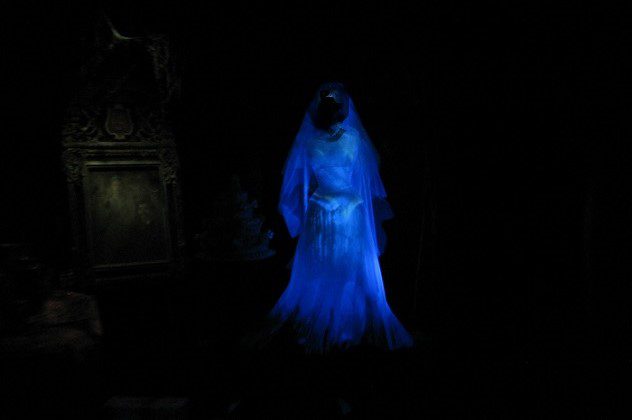
Malta is a stunning island country in Southern Europe. And while it may be the world’s tenth-smallest country, it has some of the world’s eeriest tales to tell.
Mdina, also known as the Silent City of Malta, is the location of a scary legend. In ancient times, a beautiful young woman named Katerina, who lived in Mdina, was attacked by a knight as she was walking home. She fought back and accidentally killed her attacker.
Katerina was found guilty of murder and was sentenced to death by execution. Minutes before she was beheaded, she was allowed to marry her true love. Now, Katerina is known as the headless bride of Mdina. She stands motionlessly at the end of the streets, beckoning people to follow her. She even appears in their photographs. Sometimes she floats up to widowers and men who have had their hearts broken and whispers to them to give up on true love and join her in death instead.[10]
[ad_2]
Source link

